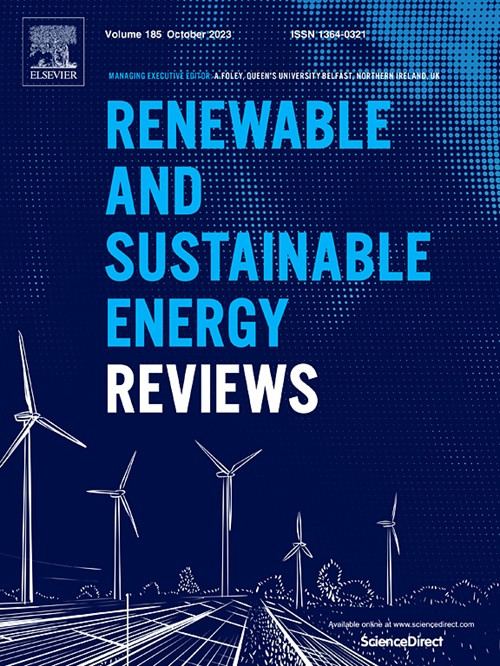用于增强传热的近场热辐射:分类、挑战和前景
IF 16.3
1区 工程技术
Q1 ENERGY & FUELS
引用次数: 0
摘要
近年来,近场热辐射因其高传热率和环境友好性等优点而受到广泛关注,在工程应用中具有很大的前景。本文对近十年来关于近场热辐射传热的计算和实验研究进行了总结和讨论。这些计算和实验研究根据结构、材料、解决方法、系统和领域进行了分类。我们观察到,由于在纳米尺度上控制间隙距离的重大挑战,使得实验操作极其困难,因此计算研究的数量大大超过实验研究。然而,近年来,由于微纳米制造技术和材料科学的进步,近场热辐射传热的实验测量取得了显著进展。然而,实验配置,如纳米探针或球板结构,在近场热系统的应用有限,因为它们的传热面积非常小。对于板-板结构,影响近场热辐射检测的因素有很多,包括传热距离、板的平整度、通过分离介质的导热比例。因此,近场热辐射的测量精度面临许多挑战,需要开发新的测量方法。最后,简要总结了近场热辐射研究面临的主要挑战,并分析了近场热辐射研究的应用前景。本文章由计算机程序翻译,如有差异,请以英文原文为准。
Near-field thermal radiation for enhanced heat transfer: Classification, challenges, and prospects
Near-field thermal radiation has garnered significant attention in recent years due to its advantages, including a high heat transfer rate and environmental friendliness, making it highly promising for engineering applications. This study summarizes and discusses the computational and experimental studies reported on heat transfer via near-field thermal radiation over the past decade. These computational and experimental studies were categorized based on configurations, materials, solution methods, systems, and domains. It was observed that computational studies significantly outnumber experimental studies because of the significant challenges in controlling gap distances at the nanoscale level, making experimental operations extremely difficult. However, notable progress has been achieved in experimentally measuring near-field thermal radiative heat transfer in recent years owing to advances in micro- and nanomanufacturing technologies and materials science. Nonetheless, experimental configurations such as nanoprobes or sphere-plate structures have limited applications in near-field thermal systems because of their very small heat transfer areas. For the plate-plate configuration, various factors affect the detection of near-field heat radiation, including the heat transfer distance, flatness of the plate, and proportion of heat conduction through the separating medium. Consequently, the measurement accuracy of near-field thermal radiation faces numerous challenges, necessitating the development of novel measurement methods. Finally, this review briefly summarizes the key challenges in near-field thermal radiation research and analyzes their potential applications.
求助全文
通过发布文献求助,成功后即可免费获取论文全文。
去求助
来源期刊

Renewable and Sustainable Energy Reviews
工程技术-能源与燃料
CiteScore
31.20
自引率
5.70%
发文量
1055
审稿时长
62 days
期刊介绍:
The mission of Renewable and Sustainable Energy Reviews is to disseminate the most compelling and pertinent critical insights in renewable and sustainable energy, fostering collaboration among the research community, private sector, and policy and decision makers. The journal aims to exchange challenges, solutions, innovative concepts, and technologies, contributing to sustainable development, the transition to a low-carbon future, and the attainment of emissions targets outlined by the United Nations Framework Convention on Climate Change.
Renewable and Sustainable Energy Reviews publishes a diverse range of content, including review papers, original research, case studies, and analyses of new technologies, all featuring a substantial review component such as critique, comparison, or analysis. Introducing a distinctive paper type, Expert Insights, the journal presents commissioned mini-reviews authored by field leaders, addressing topics of significant interest. Case studies undergo consideration only if they showcase the work's applicability to other regions or contribute valuable insights to the broader field of renewable and sustainable energy. Notably, a bibliographic or literature review lacking critical analysis is deemed unsuitable for publication.
 求助内容:
求助内容: 应助结果提醒方式:
应助结果提醒方式:


